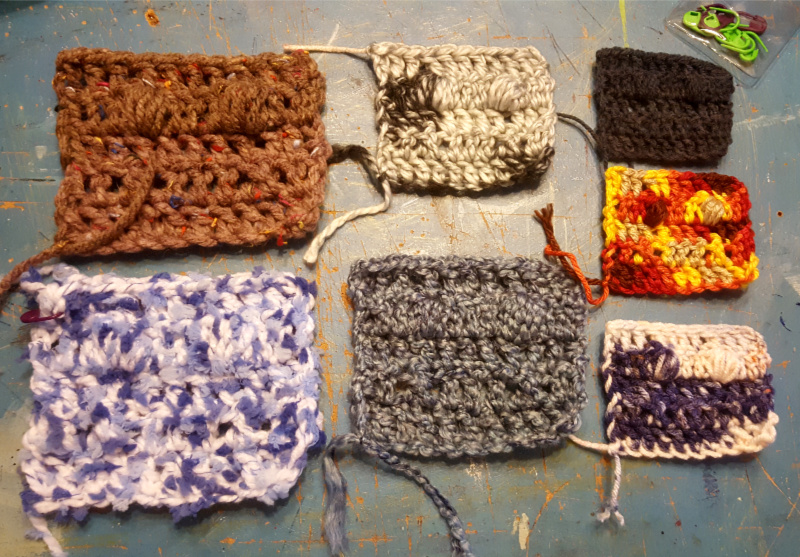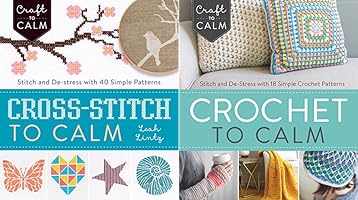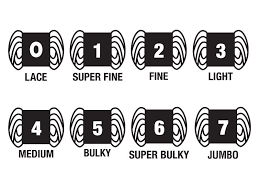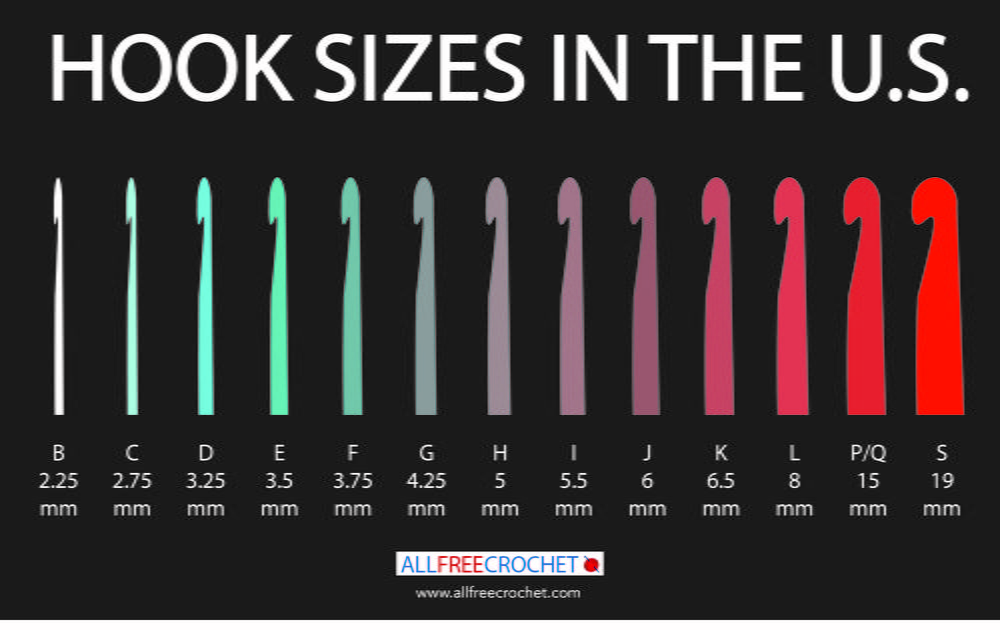As a long-time yarn enthusiast, I often find myself in my local craft store, scanning the vast array of textures, colors, and weights. Just last week, I encountered a luscious skein of wool that practically whispered my name, igniting a yarn quest. The world of yarn is grand, and every type has its own story. Let’s dive deep into the fascinating realm of yarn types, uncovering which one best suits your project and crafting style.
Unraveling Different Yarn Fibers
When it comes to choosing the right yarn for your project, the options can feel overwhelming. I remember my first knitting project; I stood in the yarn aisle, completely lost. Should I go for wool or acrylic? What about those eco-friendly options? Understanding the fiber content of yarn is essential! Let's dive into the world of yarn fibers and unravel these questions together.
Wool vs. Acrylic: Which Should You Choose?
Wool and acrylic are two of the most popular yarn choices. But how do they stack up against each other?
Wool: This natural fiber is known for its warmth and elasticity. It can absorb moisture, making it great for cozy garments. However, wool can be sensitive to washing. It may shrink or felt if not cared for properly. If you’re making a gift, consider how the recipient will care for it.
Acrylic: On the other hand, acrylic yarn is budget-friendly and incredibly durable. It’s perfect for beginners. You can toss it in the washing machine without worry. Plus, it comes in a wide range of colors and textures. If you’re looking for something easy to work with, acrylic might be your best bet.
So, which should you choose? It depends on your project. Are you making a warm scarf for winter? Wool might be the way to go. But if you’re crafting a colorful blanket for a child, acrylic could be the better option.
Understanding Natural vs. Synthetic Fibers
Let’s break it down further. Natural fibers come from plants or animals. Wool, cotton, and silk fall into this category. They often provide breathability and comfort. However, they can require special care.
Synthetic fibers, like acrylic, are man-made. They’re often more affordable and easier to maintain. But they may not have the same warmth or breathability as natural fibers. Think of it this way: natural fibers are like a warm hug, while synthetic fibers are more like a cozy blanket. Both have their place, but they serve different purposes.
The Rise of Eco-Friendly Yarns
In recent years, eco-friendly yarns have gained popularity. More and more crafters are looking for sustainable options. Organic cotton, bamboo, and even recycled fibers are now available. These materials are not only good for the planet, but they also offer unique textures and colors.
Using eco-friendly yarns can be a rewarding choice. It allows us to create beautiful projects while being mindful of our environmental impact. Plus, many of these yarns are soft and comfortable to wear. It’s a win-win!
"Choosing the right yarn can make or break a project."
As we explore the world of yarn, remember that the right choice can elevate your crafting experience. Whether you prefer the warmth of wool, the durability of acrylic, or the sustainability of eco-friendly options, each fiber has its unique benefits. What matters most is finding the yarn that speaks to you and your project.
So, the next time you’re in the yarn aisle, take a moment to consider your options. Think about the feel, the care instructions, and the purpose of your project. With the right yarn in hand, you’ll be well on your way to creating something beautiful!
Yarn Weights and Their Mysteries
Understanding yarn weights can feel like navigating a maze. With categories ranging from super fine to jumbo, it’s easy to get lost. But fear not! I’m here to help you decode these categories and discover how they impact your projects.
Decoding Yarn Weight Categories
Yarn weights are classified into several categories, each with its own unique characteristics. Here’s a quick breakdown:
0 - Lace: This is the finest yarn, perfect for delicate shawls and intricate patterns.
1 - Super Fine: Often used for lightweight garments and baby items.
2 - Fine: Great for lightweight sweaters and accessories.
3 - Light: Ideal for summer garments and lightweight blankets.
4 - Medium: The most common weight, perfect for a variety of projects.
5 - Bulky: Works up quickly, great for warm winter garments.
6 - Super Bulky: Perfect for cozy blankets and quick projects.
7 - Jumbo: The thickest yarn, ideal for statement pieces.
Each category serves a purpose. But how do you choose the right one for your project? It’s all about understanding the drape and stitch definition.
How Yarn Weight Affects Drape and Stitch Definition
Have you ever noticed how some knitted items flow beautifully while others feel stiff? That’s the magic of yarn weight at work. The weight of the yarn directly influences how your project looks and feels.
Drape refers to how a fabric hangs. Lightweight yarns tend to have a softer drape, making them perfect for flowy garments. Heavier yarns, on the other hand, create a more structured fabric. Think of it this way: a lightweight scarf will flutter in the wind, while a bulky blanket will hold its shape.
Stitch definition is another crucial factor. It describes how clearly the stitches show up in your finished piece. Finer yarns often produce sharper, more defined stitches, while thicker yarns can create a softer, more blended look. This is especially important for intricate patterns where you want every detail to shine.
My Personal Story of a Yarn Weight Mishap
Let me share a little story. A few years ago, I was excited to start a new project. I had my heart set on a beautiful lace shawl. I picked a yarn that looked stunning but didn’t check the weight. It turned out to be a bulky yarn instead of lace. I was in for a surprise!
The result? A shawl that looked more like a cozy blanket than a delicate accessory. I learned my lesson the hard way. Always check the yarn weight before diving in! It’s a simple step that can save you from a lot of frustration.
Why Yarn Weight Matters
As Anna Smith, a knitting coach, wisely said,
"Yarn weight determines not only how your project looks but also its versatility."
This couldn’t be truer. Choosing the right yarn weight can make or break your project.
Remember, yarn weight affects the size and texture of your finished projects. Lightweight yarn is great for delicate items, while heavier yarn suits winter garments. So, when you’re at the yarn store, take a moment to consider what you want to create.
In conclusion, understanding yarn weights is essential for every crafter. It opens up a world of possibilities and helps you make informed choices. Whether you’re knitting a cozy blanket or a delicate shawl, knowing the yarn weight will guide you on your crafting journey.
Choosing the Right Yarn for Your Project
When I first started my crafting journey, I quickly learned that selecting the right yarn is crucial. It can make or break your project. Have you ever finished a piece only to realize it didn’t turn out as you envisioned? Trust me, I have! That's why I want to share some insights on how to choose the perfect yarn for your next project.
Factors to Consider
Before diving into the yarn aisle, let’s consider a few key factors:
Project Type: What are you making? A cozy sweater? A delicate shawl? Different projects require different yarn types. For example, a warm wool is great for winter garments, while cotton is perfect for summer items.
Season: The time of year can influence your yarn choice. In colder months, opt for thicker, warmer yarns. In contrast, lighter yarns are ideal for spring and summer projects.
Skill Level: Are you a beginner or an experienced crafter? Beginners might want to stick with simpler, more forgiving yarns. More experienced crafters can experiment with specialty yarns.
Understanding these factors can guide you in making a more informed decision. It’s like choosing the right tool for a job. If you use a hammer when you need a screwdriver, things can get messy!
Tips for Matching Yarn to Your Project's Pattern
Now that you know what to consider, let’s talk about how to match yarn to your project’s pattern. Here are some tips:
Read the Pattern: Most patterns will suggest a specific yarn weight and fiber content. Use these recommendations as a starting point.
Swatch First: Always make a swatch before committing to a yarn. This helps you see how the yarn behaves and if it matches your pattern’s gauge.
Consider Texture: The texture of the yarn can affect the final look. A smooth yarn will show off stitch definition, while a textured yarn can add depth.
By following these tips, you can ensure that your yarn complements your project beautifully. Remember, the right yarn can enhance your crafting experience and final result.
A Memorable Ruined Project
Let me share a personal story. I once decided to make a beautiful scarf for a friend. I was excited and rushed to the store, picking a yarn that looked pretty but was completely wrong for the pattern. It was too thick and scratchy. When I finished, the scarf was bulky and uncomfortable. My friend appreciated the effort, but I felt disappointed. This experience taught me the importance of choosing the right yarn. It’s a lesson I carry with me to this day.
"A great project starts with the perfect yarn. Don't skip this step!"
Choosing the right yarn is essential. It’s not just about color or texture; it’s about the overall feel and functionality of your project. Each type of yarn has its unique properties that can affect the drape, warmth, and durability of your finished piece.
Final Thoughts
As you embark on your next crafting adventure, remember to take your time when selecting yarn. Consider the project type, the season, and your skill level. Don’t forget to read the pattern and swatch! Your choice of yarn can truly elevate your work from ordinary to extraordinary. So, let’s embrace the journey of crafting with the right yarn. Happy crafting!



